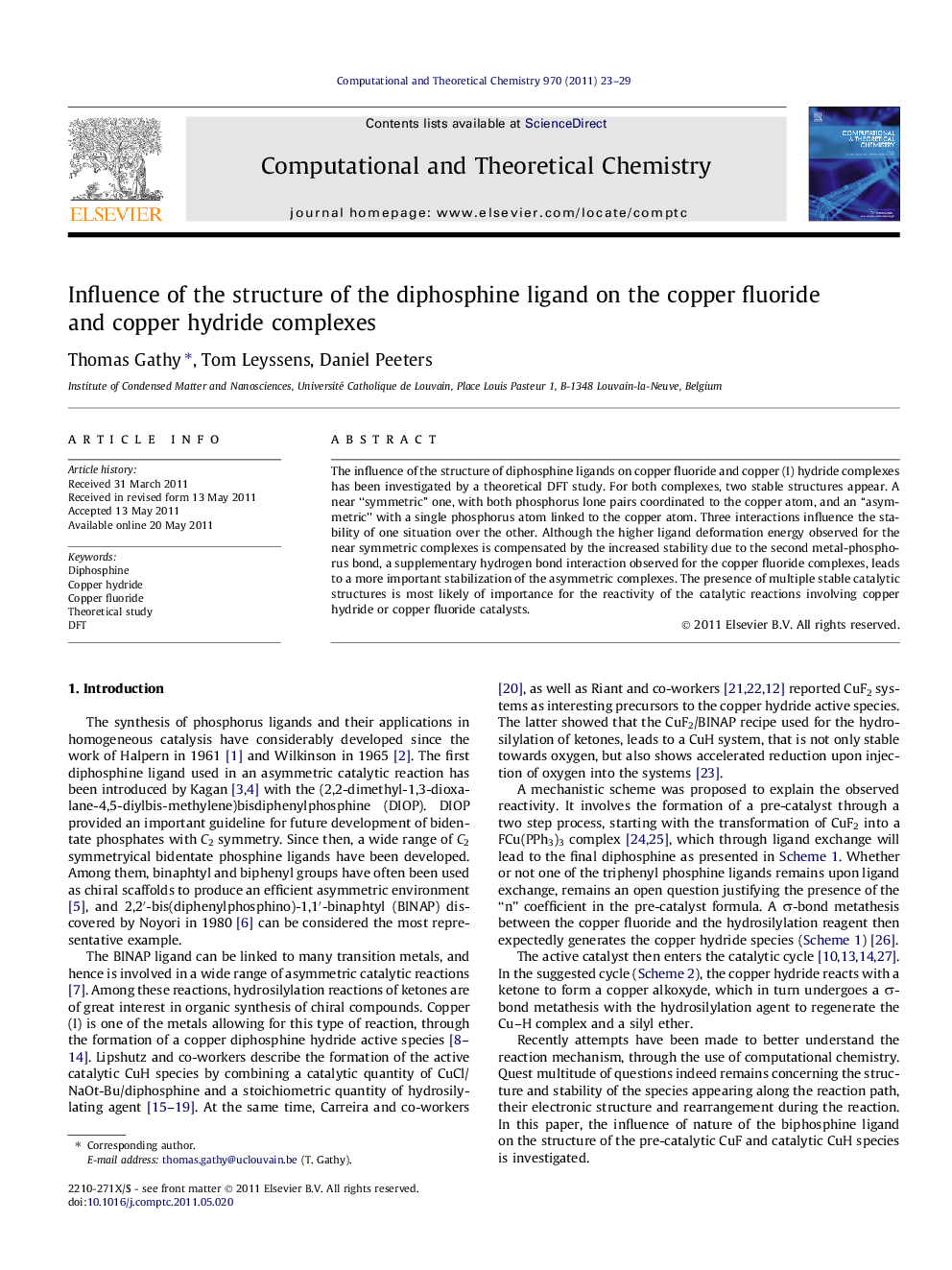| Article ID | Journal | Published Year | Pages | File Type |
|---|---|---|---|---|
| 5395072 | Computational and Theoretical Chemistry | 2011 | 7 Pages |
Abstract
The influence of the structure of diphosphine ligands on copper fluoride and copper (I) hydride complexes has been investigated by a theoretical DFT study. For both complexes, two stable structures appear. A near “symmetric” one, with both phosphorus lone pairs coordinated to the copper atom, and an “asymmetric” with a single phosphorus atom linked to the copper atom. Three interactions influence the stability of one situation over the other. Although the higher ligand deformation energy observed for the near symmetric complexes is compensated by the increased stability due to the second metal-phosphorus bond, a supplementary hydrogen bond interaction observed for the copper fluoride complexes, leads to a more important stabilization of the asymmetric complexes. The presence of multiple stable catalytic structures is most likely of importance for the reactivity of the catalytic reactions involving copper hydride or copper fluoride catalysts.
Related Topics
Physical Sciences and Engineering
Chemistry
Physical and Theoretical Chemistry
Authors
Thomas Gathy, Tom Leyssens, Daniel Peeters,
